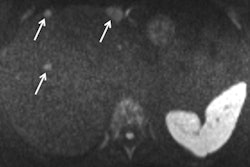
The medical imaging community needs to ask itself why so few young radiologists are involved in research on hybrid, molecular, and translational imaging, according to an editorial published online on 18 May in European Radiology by Dr. Thomas Helbich of the Medical University of Vienna.
 Dr. Thomas Helbich. Image courtesy of the Medical University of Vienna.
Dr. Thomas Helbich. Image courtesy of the Medical University of Vienna.In an editorial that explores research developments at the upcoming ECR 2020 in July, Helbich observed a clear trend towards effective implementation of hybrid imaging (PET/CT, PET/MRI), the development of imaging biomarkers, targeted tracers, smart nanoparticles, and real-life visualization of metabolic processes.
"Nevertheless, we have to acknowledge that we are just entering a new era of personalized and precision medicine, with the initial results presented at ECR 2020," he wrote. "We should recognize that only the tip of the iceberg with regard to molecular and translational preclinical imaging was presented at the ECR."
Helbich noted that the European Society of Radiology (ESR), or its subsocieties such as the European Society for Hybrid, Molecular, and Translational Imaging (ESHIMT), makes a conscious effort to foster specific educational and training programs that evolve and disseminate knowledge about preclinical imaging sciences in Europe and across the world.
In addition, the European Institute for Biomedical Imaging Research (EIBIR) aims to coordinate and support the development of medical imaging and the dissemination of knowledge with the goal of improving the diagnosis, treatment, and prevention of disease, he said. The family of ESR journals also provides a base to publish exciting research articles.
Despite these efforts, only a minority of young radiologists today are involved in the preclinical and translational field of research that includes hybrid, molecular, and translational imaging, Helbich said.
"We as senior researchers and mentors have the responsibility to open new avenues,
provide opportunities, and guide future research projects," he wrote. "This young generation of radiologists is our future. Let's give them time to fulfill their research dreams!"



















